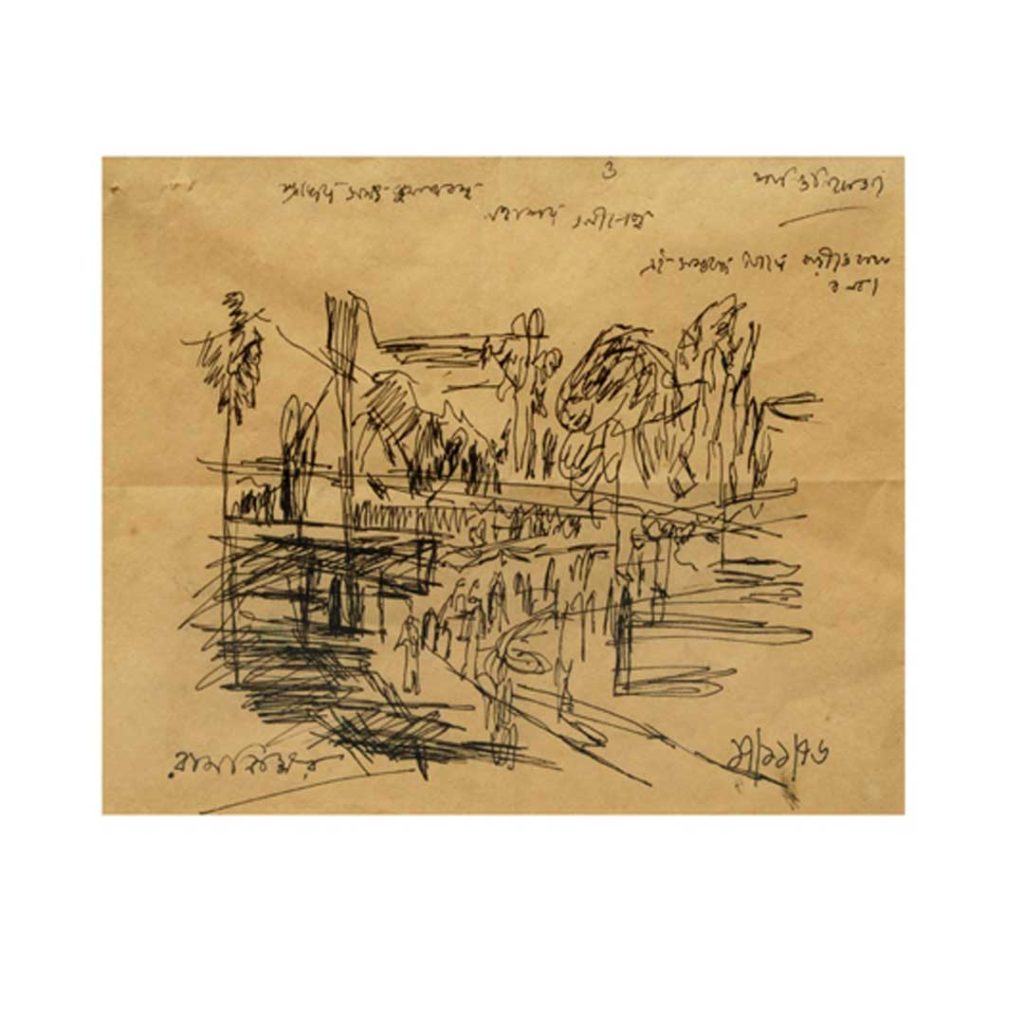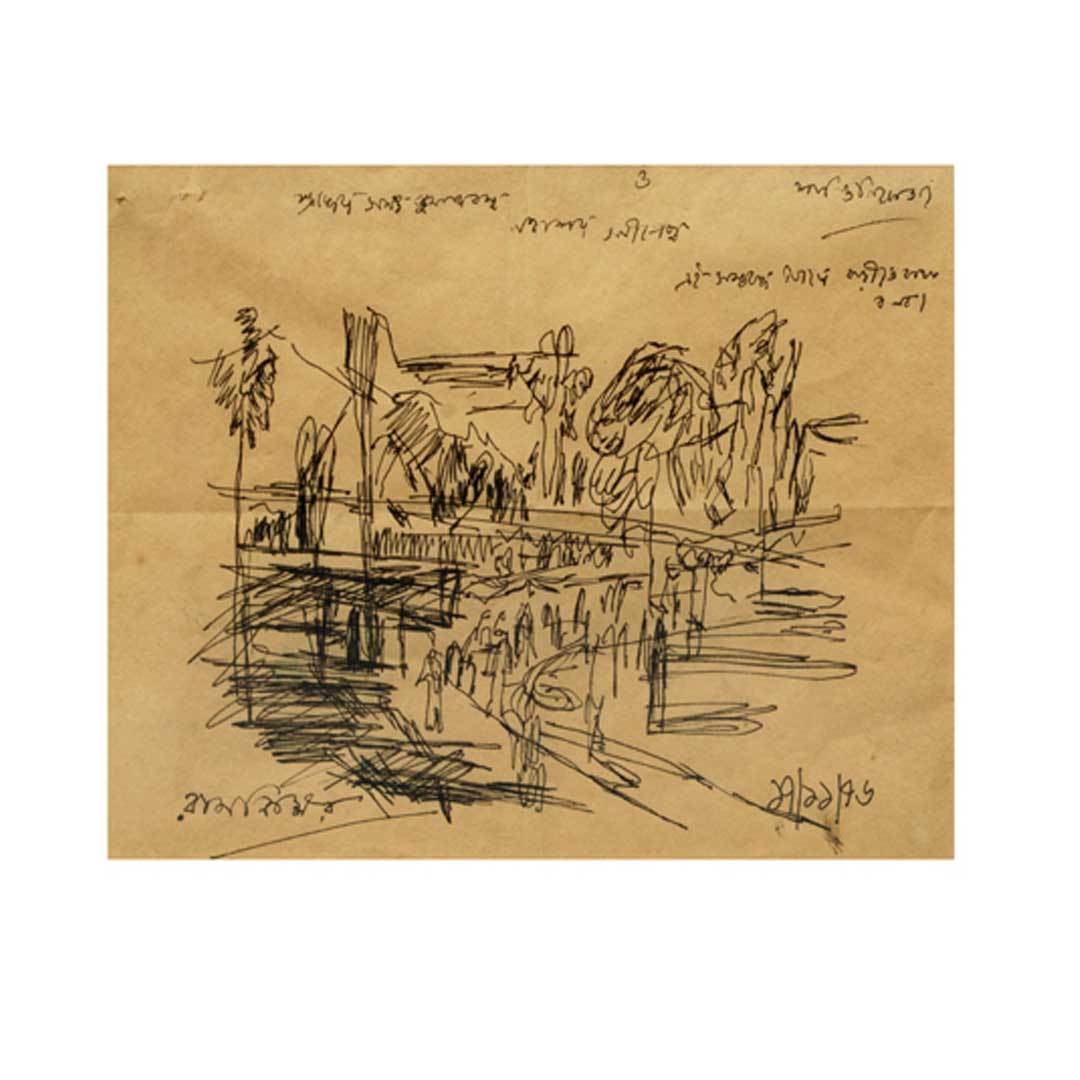
Ramkinker Baij
Ramkinkar Baij was the earliest Indian artist to experiment with abstract sculptural forms. His oil on canvas paintings have a singular experimenting quality going beyond its time, unregimented by dogmas and with only one commitment – to be unstintingly creative.
Born in Bankura in West Bengal in 1910, Ramkinkar Baij studied at the Kala Bhavan, Vishwa Bharati University, Santiniketan in 1925. Trained by two European sculptors, one of whom was a disciple of Bourdelle, who were on a visit to Santiniketan on an invitation by Tagore, his style was still uniquely his own. Groomed by his mentors, Nandalal Bose and Tagore, the clay modeler turned artist. Working at a time when traditional art was transitioning to modern art, Baij’s work proved to be crucial to Indian art history. Nature and Baij’s own folk background turned out to be the crucial influences in the formation of his own style. Later, he headed the Department of Sculpture at the Kala Bhavan.
He believed that it is only momentum that creates tension in a work of art. His work is characterized by a tremendous energy; his art is joyous, vital and reaching out to light. It is earthy and dynamic while showing a surging movement or growth. His path-breaking work in sculpture has been both acknowledged and respected, first in Santiniketan, then across the country, and internationally as well. His sand and pebble sculptures are noted for a typical, lyrical, metrical sensuality, which has an amazing oneness with nature. Indian sculpture, hitherto limited to academic naturalism, was transformed by this artist.
He integrated elements of Santhal tribal art and life into his own work and enhanced them by an understanding of Western expressionism that was gleaned from books at the library of the Kala Bhavan. Although primarily known for his expressionistic sculpture, he was a gifted painter. This sense of rhythm that his sculpture is noted for is manifest brilliantly in his watercolors. The fluidity of this medium lent itself to his style. His works in the Kalighat tradition interconnected with Cubism to achieve a peculiarly personal idiom. Both his sculpture and his paintings are unprompted and bold.
A retrospective of his works was held at the National Gallery of Art, New Delhi in 1990. His works are in the permanent collection of the National Gallery of Modern Art, New Delhi and in several private and public collections.
Baij died on August 2, 1980, in Kolkata.

